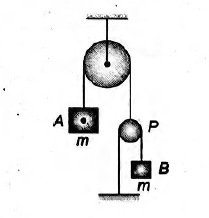Q.
In the figure shown, the system is released from rest. Find the velocity of blocks when block B has fallen a distance $l$. Assume all pulleys to be massless and frictionless

Work, Energy and Power
Solution: